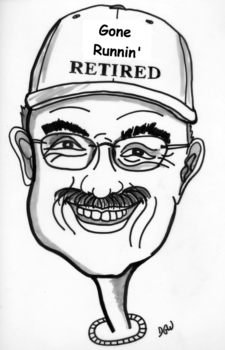I like baseball because it’s a relaxed no time limit thinking sport. One manager has 27 outs to score as many runs as possible, and the other manager tries to position his players to stop them. There are limited defensive positioning rules.
In recent years, managers can collect information and tendencies on their opponents that help them position their players. The positioning of their players is labeled “The Shift,” as managers are shifting players from their classic defensive places on the field.
The managers are shifting players to where a batter tends to hit. That sounds like a good plan.
Offensive players are crying that the shift is unfair. I say, “hit it where they ain’t.”
There is talk of outlawing the shift. This rule would require two infielders to the left of second base and two infielders to the right. Also, infielders would have to have one foot on the infield dirt.
They could always paint four dots on the infield or maybe four boxes. We need to appease those cry babies.
Only two defensive players are restricted when the pitcher throws the ball in the current MLB rulebook. The catcher must be in the marked box behind the plate, and a pitcher’s foot must contact the rubber. The other seven fielders should be in fair territory.
MLB could make less restrictive changes that allow the manager to position their fielders and still keep openings for hitters.
My idea radiates around the location of the center fielder. Here are how the other six fielders would be restricted:
The second baseman must be to the right of the center fielder.
The first baseman must be to the right of the second baseman.
The right fielder must be to the right of the center fielder.
The shortstop must be to the left of the center fielder.
The third baseman must be to the left of the shortstop.
The left fielder must be to the left of the center fielder.
In the middle of an inning, a player may only change a designated position when there is a substitution.
Illegal positioning would result in a balk.
These restrictions would allow managers to retain their infield shifts. However, those shifts may require changes in outfielders, leaving significant gaps. The large gaps will give hitters more space to “hit it where they ain’t.”
